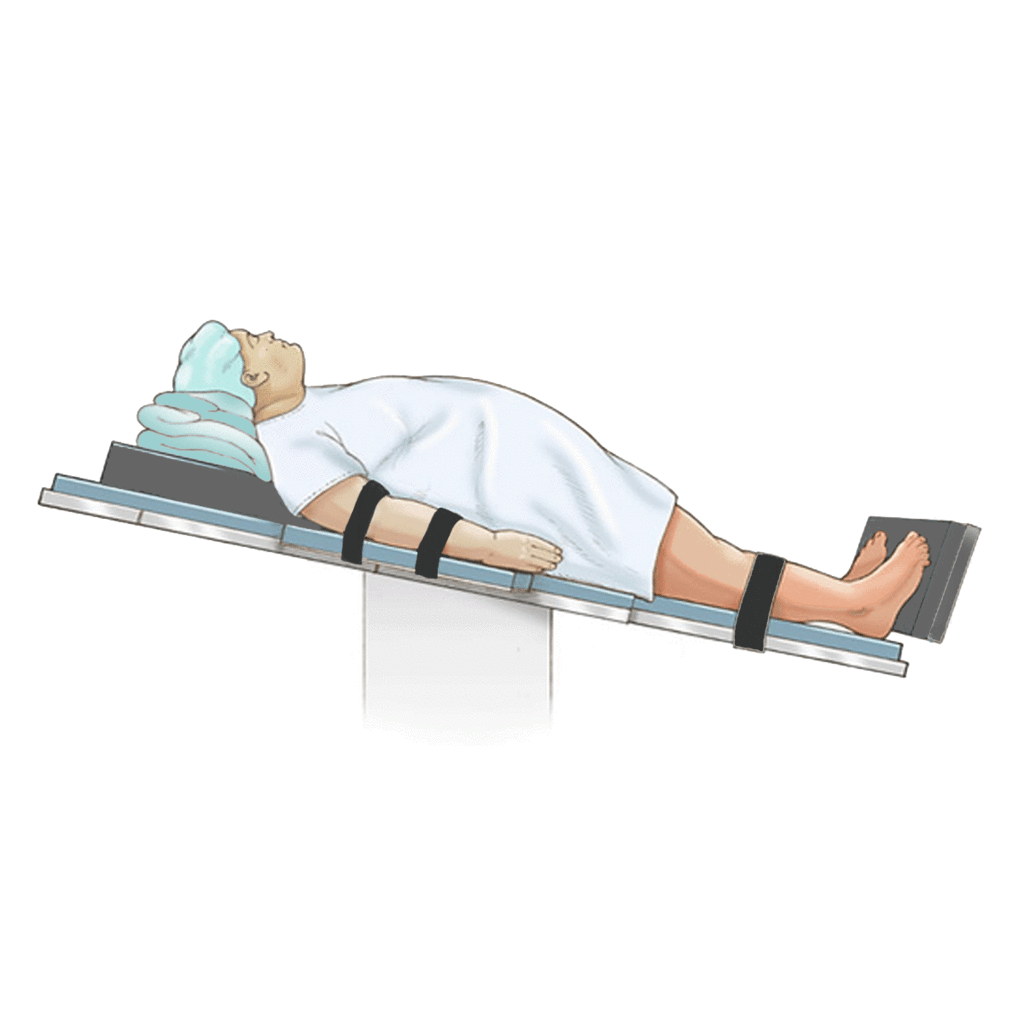In medicine, there are several methods of positioning the patient depending on the surgical procedure to be performed or the discomfort to be relieved in the patient. In this article, we will learn more about the reverse Trendelenburg position, also called the anti-Trendelenburg position or the pro-Trendelenburg supine position.

What is the reverse Trendelenburg position?
The reverse Trendelenburg position, or anti-Trendelenburg position, is a method of patient positioning used in medicine. In this position, the patient lies flat on their back on an incline of about 15 to 30 degrees so that the feet are lower than the head. This is why this position is also called the pro-trendy supine position: the patient lies on their back on a horizontal plane (supine), and the lower limbs are lower than the head (pro-trendy).
Positioning the patient in the reverse Trendelenburg position requires the patient to be lying on a flat surface, such as a bed, stretcher, or treatment table, that can be tilted. Therefore, this position cannot be adopted from the floor or a chair. It should also be noted that the reverse Trendelenburg position is not a semi-seated position like the Fowler position. In fact, in the reverse position, the patient lies flat. Thus, the entire stretcher is reclined, not just the backrest.
Finally, it is interesting to know that the reverse Trendelenburg position is actually a modified version of another position: the Trendelenburg position. In the classic Trendelenburg position, also called supine decubitus, the patient lies flat on his or her back. However, this time the feet are placed higher than the head. Thus, the reverse Trendelenburg position is simply the reverse version of the Trendelenburg position, hence the name.
When to use the reverse Trendelenburg position?
The reverse Trendelenburg position is used in patient care to alleviate certain ailments or discomfort. For example, the anti-Trendelenburg position is often used in patients with gastrointestinal problems because it helps to reduce gastroesophageal reflux. It can also be used to reduce intracranial pressure. However, in general, it is not recommended that the patient be held in this position for very long periods of time unless it is done under medical supervision.
The reverse Trendelenburg position is also used as a surgical position. When the patient is placed in the anti-Trendelenburg position, the blood flow to the upper body organs is reduced. Thus, this position is used during neck or head surgery to reduce blood loss. This position is also used during surgery in the upper abdomen, as it causes the organs to be lowered and thus provides better surgical exposure during procedures in this area of the body.
When the anti-Trendelenburg position is used as a surgical position, there is a risk that the patient will slip on the operating table. To address this problem, safety straps, cushions, and a footrest are sometimes added to the operating table to keep the patient securely in place throughout the procedure.
Medical equipment designed to facilitate patient positioning in reverse Trendelenburg
In summary, the reverse Trendelenburg position is a method of patient positioning in which the patient lies on his or her back with the head higher than the lower limbs. This position is used for patient care as well as for various types of surgical procedures.
To improve the safety of patients and medical personnel, some medical equipment is designed to allow for quick and easy positioning of patients in the reverse Trendelenburg position. For example, a medical examination table may be equipped with electrical mechanisms that allow the medical professional to easily place the equipment at the degree of inclination required to achieve the anti-Trendelenburg position.
To learn more about the selection of ergonomic medical equipment offering the Reverse Trendelenburg feature, please feel free to chat with a team member.
